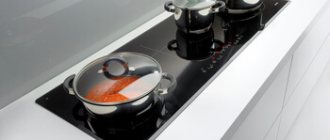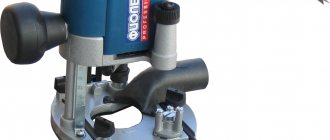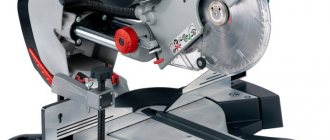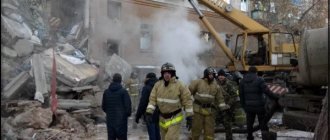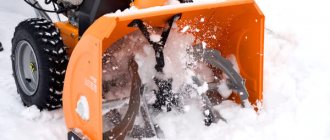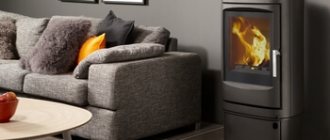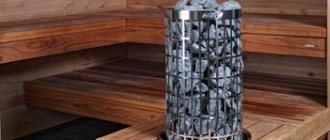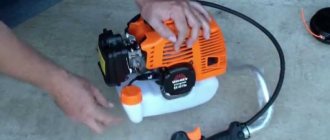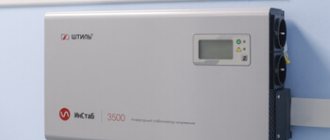An electric heat gun is a heating device where a warm air flow is generated through a heating element using a built-in fan. When the heating element is turned off, it is possible to use it like a regular fan.
They are used for heating construction sites (plastered walls, floors, suspended ceilings), garages, houses and cottages; they can also heat greenhouses.
When choosing an electric heat gun, you need to focus on the device’s power, design features, heating control and safety.
Heat guns must not be covered (this leads to disruption of air circulation and overheating) and cannot be moved while the heater is on.
What is it used for?
Heat guns are very powerful heating devices that can heat even large rooms in a matter of minutes. They also perform a drying function. Because of these features, heat guns are most often used for technical premises - warehouses, garages, etc. On average, a heat gun is 3-5 times more powerful than an electric convector. Considering this feature, it becomes clear why it is less often used in everyday life and residential premises.
A good electric heat gun can greatly raise the temperature in a room and dry the air well. Because of these features, it is used as a substitute for central heating. The need for it arises during construction work or in those rooms where there is no other heating system - in this case, you can raise the temperature to a comfortable level for a person only with the help of a gun.
One electric gun has greater efficiency and heating effect than several electric convectors or other types of heating. At the same time, the cost of such heating remains relatively low, so you can save money with it.
In practice, heat guns are used:
- In everyday life, heat guns are often used in garages. In winter, cars often freeze through. Using a gun, you can relatively quickly dry the car and heat it, and it will be able to start despite the low ambient temperature. Also, an electric gun is indispensable in those rooms where a person must work for a long time - workshops, garages, service stations, etc. By heating and drying the air, indoor conditions become comfortable and safe for humans.
- In construction, guns are used to speed up finishing and other types of work that require rapid hardening of materials due to temperature and dry air. For example, guns are used to speed up the drying of plaster. It can also be used in other works such as installing laminate and parquet. Some technological operations require warm, dry air, and a heat gun can provide it.
Which heating element in electric heat guns is the most effective?
How to choose a heat gun for your dacha based on the type of heating element? There are three types of heating elements, each of which has its own advantages and disadvantages:
- Spiral.
- heating element.
- Ceramic plate.
Heat guns with a spiral heating element have an open metal coil that is heated by the passage of electric current. This is the simplest heater option. The coil heats up quite quickly and transfers heat well to the air passing through it. Also, devices with a spiral element are the cheapest of all those on the market. However, the service life of the coil is relatively short, and its high heating and open format creates additional difficulties in meeting safety requirements. In addition, the spiral burns dust, resulting in an unpleasant odor.
The heating element is a spiral element installed inside the tube. In essence, this is the same spiral, only not of the open type, but of the closed type. Unlike a conventional spiral, it does not burn dust and dries the air less. We can say that devices with heating elements are the golden mean in terms of heating quality and price. The vast majority of devices on the market are equipped with heating elements.
Ceramic plates allow achieving the highest possible efficiency at a relatively low operating temperature. They do not scorch dust and do not dry out the air. At the same time, ceramics themselves are quite strong and durable. The only disadvantage of devices with a ceramic heater is their high cost (much depends on the manufacturer).
Which of the three heaters should I buy a device with? If your budget is limited, but you need a good gun, take it with a heating element - it doesn’t scorch dust and heats well. For example, you can buy BISON ZTP-M1-3000 with a power of 3 kW. If the issue of price is not so pressing, pay attention to models with a ceramic heater - the best efficiency without side effects. We do not recommend using it with an open spiral.
Operating principle of the device
The essence of the operation of an electric heat gun is that it heats the air from the environment. To do this, a fan is installed inside the housing, which draws air inside the gun. A heating element is also installed in its body, which heats the incoming air. Next, the warm air leaves the cannon and rises upward using the principle of convection, displacing the cold air. Thus, there is a continuous circulation of air in the room and its constant heating. The gun uses electricity to operate the fan and heat the element.
How to choose
Where do you use a heat gun?
In everyday lifeIn construction
First of all, you need to decide what it will be used for and in what rooms. The larger the proposed premises, the more powerful the heat gun is needed. For a small garage, an inexpensive low-power heat gun is suitable, but for serious heating of warehouse space you need to buy a more powerful gun. It is also worth considering what it will be used for - only for heating or also for drying the car or finishing materials.
Heat guns differ not only in power, but also in the amount of power they consume from the outlet. For domestic purposes, you need to choose a 220V gun, but for industrial or construction purposes you should think about a more powerful gun that can consume up to 380V. Electricity consumption also depends on power - if the goal is to save as much money as possible on electricity bills, then it makes sense to choose a less powerful gun or a gun with a thermostat that can regulate its operation.
Guns from different power categories also differ in weight and dimensions. This is not of particular importance if the electric heat gun will be used to heat a specific room, but it can also cause problems if the gun is planned to be moved from place to place or for the purpose of drying a car or during construction work.
Choosing a heat gun is not the most difficult task, but it must be taken seriously as it will determine whether it will suit your needs.
Specifications
Modern units are presented in different versions and differ not only in appearance, but also in characteristics. For example, the weight of the products is small, and the average is about 2–3.5 kg.
The main parameters of the devices are expressed as follows:
- supply voltage can be 380 or 220 V;
- average productivity, namely air flow, is 120–200 m3/hour;
- professional devices have a service life of more than 10 years;
- the body is made of durable metal;
- the average height of the device is about 0.6–0.7 m.
Regulators and sensors are often located on the top of the housing
The voltage network to which the unit is connected requires special attention. Models with a power of up to 7 kW operate only from a network of 220 volts, and if the power of the device is higher, then it is connected to a network with a voltage of 380 V. In the case when a low-power gun is connected to a high-voltage network, it will quickly burn out, break and become unusable. The operation of devices with a power of more than 7 kW from a 220 V network is often impossible or carried out ineffectively.
Video: tips for choosing an electric heat gun
Best models
We have compiled a rating of the best heat guns currently on sale. When compiling the list, we first of all paid attention to the quality of the gun, while taking into account its cost so that it corresponds to the characteristics. The list includes both inexpensive entry-level guns and powerful ones for continuous use and heating of large rooms.
Wester TBK-2000 (2 kW)
An inexpensive heat gun for domestic needs - heating a garage or living space. Suitable for warming up a frozen car. Prevents condensation and combats high humidity in the room.
| Power | 2 kW |
| Room size | 20 sq. m. |
| Voltage | 220 V |
| Price | 1500 rubles |
- Advantages : inexpensive, economical electricity consumption;
- Disadvantages : the power is not enough for a large room.
Ballu BHP-P2-5 (4.5 kW)
This is a heat gun from the middle price category, which is suitable for heating medium-sized rooms. Can be used during construction and installation work, as well as for heating warehouses. Equipped with a thermostat and overheat protection function. There are several options for adjusting the operation.
| Power | 4.5 kW |
| Room size | 50 sq. m. |
| Voltage | 220 V |
| Price | 4000 rubles |
- Advantages : high power, thermostat, overheating protection;
- Disadvantages : it cannot work continuously;
Ballu BHP-PE-5 (5 kW)
Another heat gun from the same manufacturer. It has a little more power than the previous gun, and at the same time costs a little less. It can work longer because its air exchange is slightly reduced. This does not affect the heating efficiency, but saves energy and protects against overheating.
| Power | 5 kW |
| Room size | 50 sq. m. |
| Voltage | 220 V |
| Price | 2800 rubles |
- Advantages : high power, thermostat;
- Disadvantages : air exchange rate is slightly reduced.
Vulkan 6000 TP
A professional-grade heat gun that can be used to heat large rooms (up to 60 square meters in size). There are two operating modes. It has overheating protection and a thermostat to regulate the temperature.
| Power | 6 kW |
| Room size | 60 sq. m. |
| Voltage | 380 V |
| Price | 9500 rubles |
- Advantages : very high power and heating area, thermostat and overheating protection;
- Disadvantages : high price, not suitable for a 220 V outlet.
AOEVO 15TP Thermia 15000
A high-power heat gun that can heat rooms up to 150 square meters. Designed for large warehouses or small production facilities. Powered by 380 V mains.
| Power | 15 kW |
| Room size | 150 sq. m. |
| Voltage | 380 V |
| Price | 25,000 rubles |
- Advantages : 15 kW of power, large heating area;
- Disadvantages : high cost, requires power from 380V;
Hyundai H-HG-20-U9005 (2 kW)
Compact heat gun from Hyundai with a power of 2 kW. There is a mechanical control to adjust the temperature. A special feature of the model is its waterproof housing, which allows you to use this gun in damp and damp rooms at any time of the year. Built-in overheat protection.
| Power | 2 kW |
| Room size | 22 sq. m. |
| Voltage | 220 V |
| Price | 1500 rubles |
- Advantages : compact and lightweight, moisture protection, temperature control;
- Disadvantages : short cord for plugging into an outlet;
Ballu BHP-P-9 (9 kW)
A powerful universal heat gun that can be used for a wide range of tasks: heating residential and non-residential premises, drying air and drying cars. This gun is quite powerful, but at the same time relatively compact and light (for its size).
| Power | 9 kW |
| Room size | 90 sq. m. |
| Voltage | 380 V |
| Price | 5600 rubles |
- Advantages : versatility, weight, price, power;
- Disadvantages : requires a 380V outlet, noise during operation.
